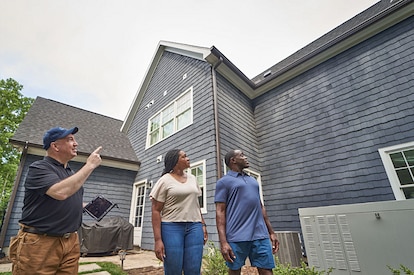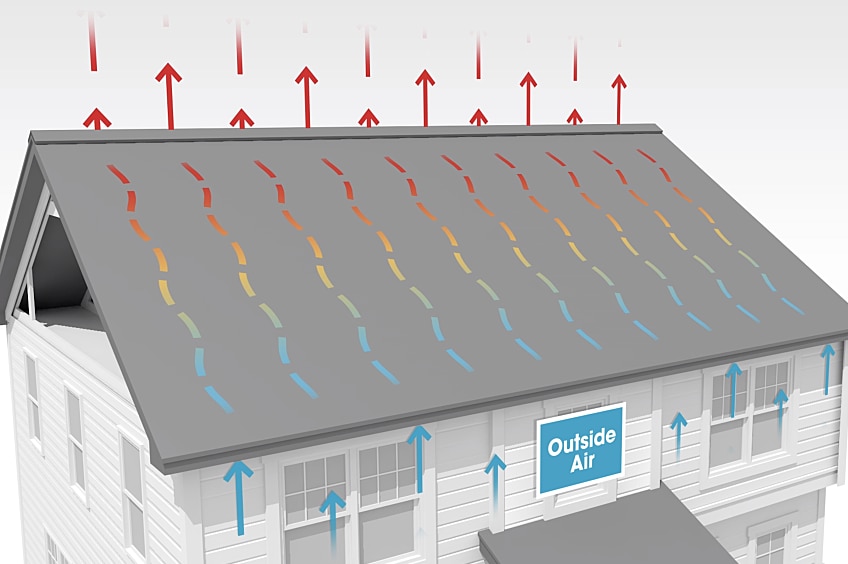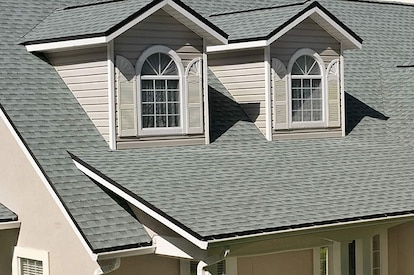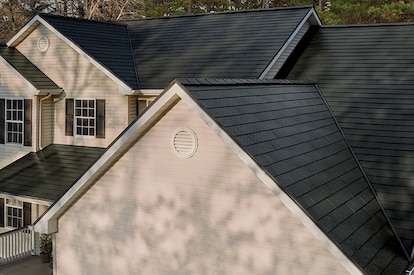
Your Home
How to Conduct a Roof Inspection from the Ground
As a homeowner, it's always a good idea to stay on top of routine maintenance that will help protect your biggest investment—and that includes a regular roof inspection. Catching leaks or damage early can help preserve your roof's longevity and prevent major issues.But getting up on a ladder to walk around on your roof can be dangerous. It's safer to visually inspect your roof from the ground. Read on to learn how to conduct a routine roof check, so you'll know when it's time to bring in a professional.Walk around the Entire PropertyTo see all the angles of your roof, you'll first need to walk around your home, looking up and down. Check for any fallen shingles or debris on the ground or any missing spots on the roof where shingles may have broken off.Using binoculars, look for moss, piles of leaves, algae, or other debris on the roof. If left unaddressed, this debris can damage the structure by trapping moisture, eventually causing it to seep into the sheathing beneath your shingles. After some time, this can develop into serious water damage and leaks.Look for Damaged ShinglesExcessive heat and moisture in your attic, typically caused by inadequate ventilation, may compromise the roof system's performance or even cause shingles to become misshapen or damaged. Loose, curled, cracked, or buckled shingles can leave room for water to seep in and damage your roof's underlayment.If you see shingles that don't look right or are missing altogether, consult a roofing professional. They can help you understand if it's a simple fix or indicative of something larger, meaning it could be time to replace the roof.Check Your Gutters, Fascia, and SoffitNext, look for obvious damage, such as holes, dents, mold, or cracks. Gutters clogged with branches, leaves, or dirt can prevent water from draining off the roof. Also, asphalt shingles contain small, gravel-like granules, and if you see this material has ended up in your gutters, it can mean the shingles are nearing the end of their lifespan. Inspect the downspout to be sure it's clear of debris, too.While you can remove leaves or sticks yourself, hire a gutter cleaning service for a larger blockage. If you need to climb a ladder to reach any part of your gutters, it's best to leave that to an insured service.Peek at the Flashings from the BalconyIf you have a balcony or other way to safely view your roof from above, get a closer look at the flashings. These are the metal components that redirect water from your roof, located around your chimney, vent pipes, and dormers.Flashings are often the most vulnerable areas around your roof and the first to show wear and tear. If they're dented, rusty, or otherwise damaged—or if the caulk is brittle or cracked—water can get into your roof's interior structure and lead to rot.Examine the Attic or CrawlspaceAfter your exterior inspection, head inside. Some hidden roof damage or water infiltration can be seen from your attic. Using a flashlight, look for signs of rotting wood joists, sunlight coming through the joints, water damage on the floor, or any vulnerable spots around vents, skylights, or the chimney. Also check your rafters, insulation, and any other wooden structures for signs of mold, moisture, and rot.Scan Your Home's InteriorSome early signs your roof might be leaking are obvious from inside the house. Look for damp spots near the fireplace, water stains on the pipes that vent your furnace or water heater, dark patches, or peeling paint on your ceilings.When to Go with a ProPerform a visual roof inspection twice a year—in the spring or early summer and again in the fall. Conducting regular inspections helps you get to know your roof and spot any issues immediately.If your roof looks like it's in good shape after your inspection, you probably don't need to call in a licensed roofing contractor. However, if you've seen any worrisome signs of damage or leaks, it's best to book a professional inspection before the issues worsen. A GAF-certified roofing contractor* can make any necessary repairs, so your roof continues to protect your most valuable asset.*Contractors enrolled in GAF certification programs are not employees or agents of GAF, and GAF does not control or otherwise supervise these independent businesses. Contractors may receive benefits, such as loyalty rewards points and discounts on marketing tools from GAF for participating in the program and offering GAF enhanced warranties, which require the use of a minimum amount of GAF products. Your dealings with a Contractor, and any services they provide to you, are subject to the GAF Contractor Terms of Use.
By Authors Wendy Helfenbaum
March 22, 2024



